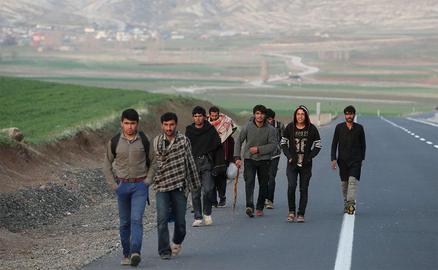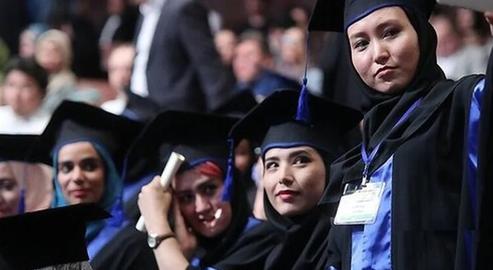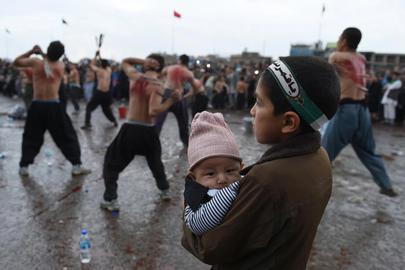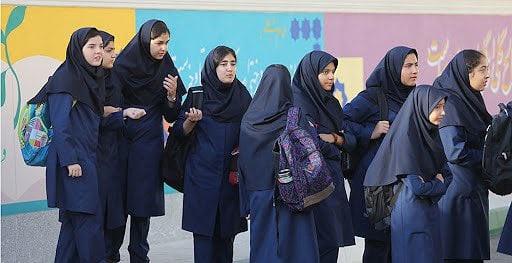With the Taliban’s lightning-fast and brutal seizure of Afghanistan now near-complete, Iran is braced for a new wave of desperate Afghan migrants making their way across the border in search of a relatively safe place to live.
The Islamic Republic’s officials and border guards of have a record of brutalizing Afghans who make the crossing illegally. Official near-silence reigned in Tehran as the Taliban made dramatic gains last week. But several senior politicians have sine taken to social media to express their dismay and compassion for the suffering people of Afghanistan, prompting some to vainly hope that this time, things might different.
This week Iranians mourned the plight of the Afghan people with the same fervor as for those Iranians who have lost their lives to Covid-19. The renewed dominion of one of the world’s most extreme Islamist groups over that country was all too familiar to many. It also follows a steady stream of Afghan migration to Iran in recent years, prompted largely by economic hardship.
Official statistics indicate that Afghan nationals make up the majority of immigrants to Iran, numbering an estimated 2.5 million. Of these about a million are currently on some kind of government resettlement program, mostly in the provinces of Tehran and Razavi Khorasan.
There have been five major “waves” of Afghan migration to Iran since the late 1970s. The first wave was prompted by the Soviet invasion of Afghanistan; the second by the start of the civil war; the third by the original rise of the Taliban in the mid-1990s; the fourth by the US invasion of 2001; and the fifth after the emergence of ISIS in parts of the country.
In a 2016 publication, the Statistical Center of Iran stated the five “waves” had cumulatively led to the resettlement of 1,583,000 Afghans in different cities. The Afghan Ministry of Refugees and Repatriations, however, puts the number of Afghans living in Iran at about two million, of whom 1.4 million lack "legal immigration status".
Statistics show that about 39 percent of first-generation Afghans living in Iran are Hazaras, a Persian-speaking ethnic group mostly from Afghanistan’s mountainous region of Hazarajat. They also make up more than 57 percent of second-generation Afghans in Iran.
Afghan Migrant Workers Prized and Maltreated by Iranian Employers
Notably, according to official Iranian figures, about 30 percent of Afghans living in Iran between the ages of 15 and 29 are illiterate and only two percent are graduates. Most first-generation Afghan migrants end up employed in service roles, or in semi-skilled jobs such as in the construction sector. Reports indicate that most of Tehran's bag and shoe manufacturers currently employ low-wage Afghan workers – to such an extent that if this group of migrants left Iran, the industry as a whole would have to hike up its production costs.
Afghans are widely regarded in Iran as hard workers, with a high degree of indefatigability and often, physical strength. Their simple, low-cost lifestyle is also a source of admiration. But they can be paid less than Iranian citizens and employers often drop their usual ethical principles in dealing with Afghans. Many end up going unpaid, abused and in debt slavery to people-traffickers.
Meanwhile, Afghans’ presence in Iran has long been the subject of negative, often subliminal propaganda by state institutions and media. This began to change in recent years after the formation of the Fatemiyoun Brigade: a proxy fighting force of the Revolutionary Guards on behalf of the regime’s interests in Syria, all of whose recruits are Afghan nationals and many of whom are conscripted or cheated into signing up by false promises of citizenship. Instead of being afforded the privileges due to them under international conventions, to which Iran is a signatory, Afghan males are often forcibly packed up and sent off to war zones.
Iranian Media: Afghan Presence a Blessing and a Curse
The Islamic World Political Research Quarterly is one of the Iranian state-affiliated journals that has reported on the presence of Afghans on the front lines of the Syrian civil war. These reports, though, are sandwiched between targeted content promoting the idea that Afghans’ presence is harmful to the Iranian economy and national security.
One of its recent articles, entitled Good Immigration Policy and the Presence of Afghan Refugees in the Islamic Republic, was more even-handed. “The intensification of the forced migration of Afghan refugees to Iran, the lack of adequate structures in place [to ensure] their welfare, the lack of a policy-making body and the lack of financial resources have caused good opportunities to benefit from Afghan refugees to be missed."
But it added: "The presence of Afghans in the Iranian labor market has been to the benefit of employers and to the detriment of unskilled Iranian workers... The illegal entry and exit of migrants weakens border security and creates political problems for the country."
One of the negative consequences, it said, was Afghans’ marginalization on the fringes of major cities. The article then insisted that reports of racist treatment of Afghans in Iran was “propaganda of Western countries and international human rights institutions... Afghan immigrants live alongside Iranian Muslims with desirable rights."
This false claim was made by an academic journal despite constant reports of discrimination and harassment by Afghans living in Iran. Plenty of other studies in Iran have conclusively shown that Afghans in different cities are likely to experience racism. One recent survey involving Afghan teenagers in Iran said many of these young people observed “a sense of superiority" in Iranians with whom they were in contact. The teens also described their experiences of attending Iranian gatherings in terms of "feeling like a burden” and “being insulted, discriminated against, labeled, rejected, etc”.
With the Taliban now back in power in Afghanistan, only time will tell how many people will soon be added to the Afghan immigrant population in Iran. But what is known is that their presence in countries like Iran is often marked by prejudice and exploitation; a situation that may have to change if the sixth “wave” is anything like the others.
Related coverage:
Iranian People-Smugglers Taking Afghans Hostage: A Refugee's Story
A Teenager’s Story of Being Trafficked into Iran
Afghan Migrants are Systematically Brutalized by Iran's Border Police
An Afghan’s Horrifying Memory of a Refugee Camp in Iran
Trailblazing Football Coach Helps Vulnerable Children into School in Iran
Afghans Accuse Iranian Border Guards of Drowning Their Loved Ones
IRGC Sending Afghan Refugees to Military Training in Lebanon
Afghan Migrants in Iran Get a Simple Choice: Fight in Syria or be Deported
visit the accountability section
In this section of Iran Wire, you can contact the officials and launch your campaign for various problems



























comments